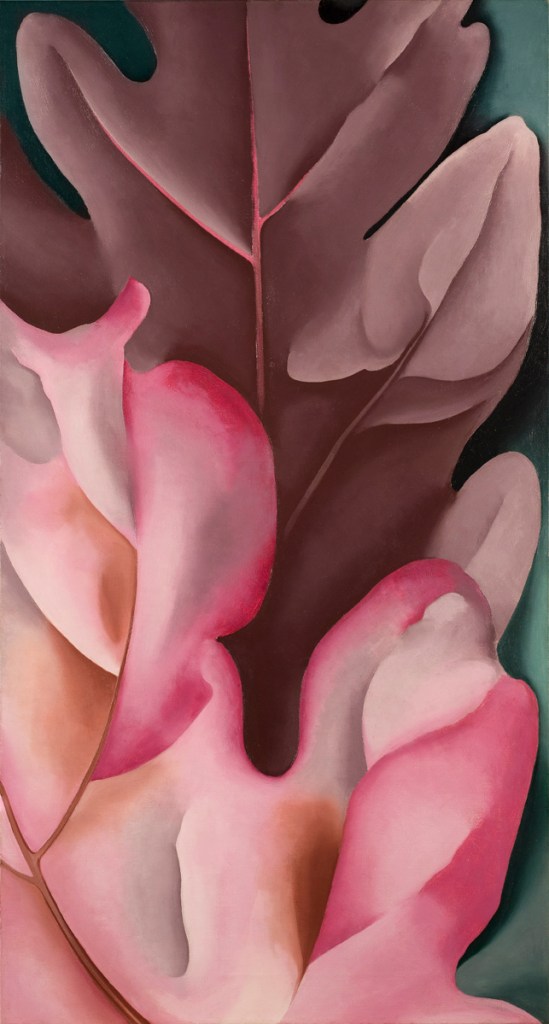
Oak Leaves, Pink and Gray, 1929
Oil on canvas, 33 ⅛ x 18 inches
1936.85 & 1937.1
ABOUT THE ART
To Georgia O’Keeffe, objects in nature had individual identities, and their maturity was as interesting as infancy. She saw symbols of death and decay as important indications of rebirth—reminders of a continual process of transition undergone by all living things. In 1923, O’Keeffe turned her attention to the study of flowers and leaves. In Oak Leaves, Pink and Gray, from 1929, she depicts leaves on a giant scale, observed close up as if a camera had focused on them. This photographic influence was characteristic of her work; the large scale creates an overwhelming experience for the viewer. We feel as though these leaves, painted in such detail, might pour out of the canvas and enter the room where we stand. In her series of flowers and leaves, O’Keeffe wanted viewers to engage with forms in nature that we too often overlook. She was not concerned that the leaves look exactly as they do in nature, however; instead, she wanted to convey a deep experience of nature.
ABOUT THE ARTIST
Georgia O’Keeffe was one of the few women artists associated with modernist trends in American painting during the first half of the twentieth century. She had an affinity for simplicity in life and art and a reverence for nature. Occasionally her art was abstract, but she consistently retained objective subject matter.
The major themes of O’Keeffe’s oeuvre were changing life cycles; the omnipresent reality of death in life; and the beauty, delicacy, and harmony in nature. She was especially attracted to the stark, rugged country of the American Southwest after spending a summer in Taos, New Mexico, in 1929. She lived in Abiquiu, New Mexico, or in nearby Santa Fe from 1945 until her death in 1986.